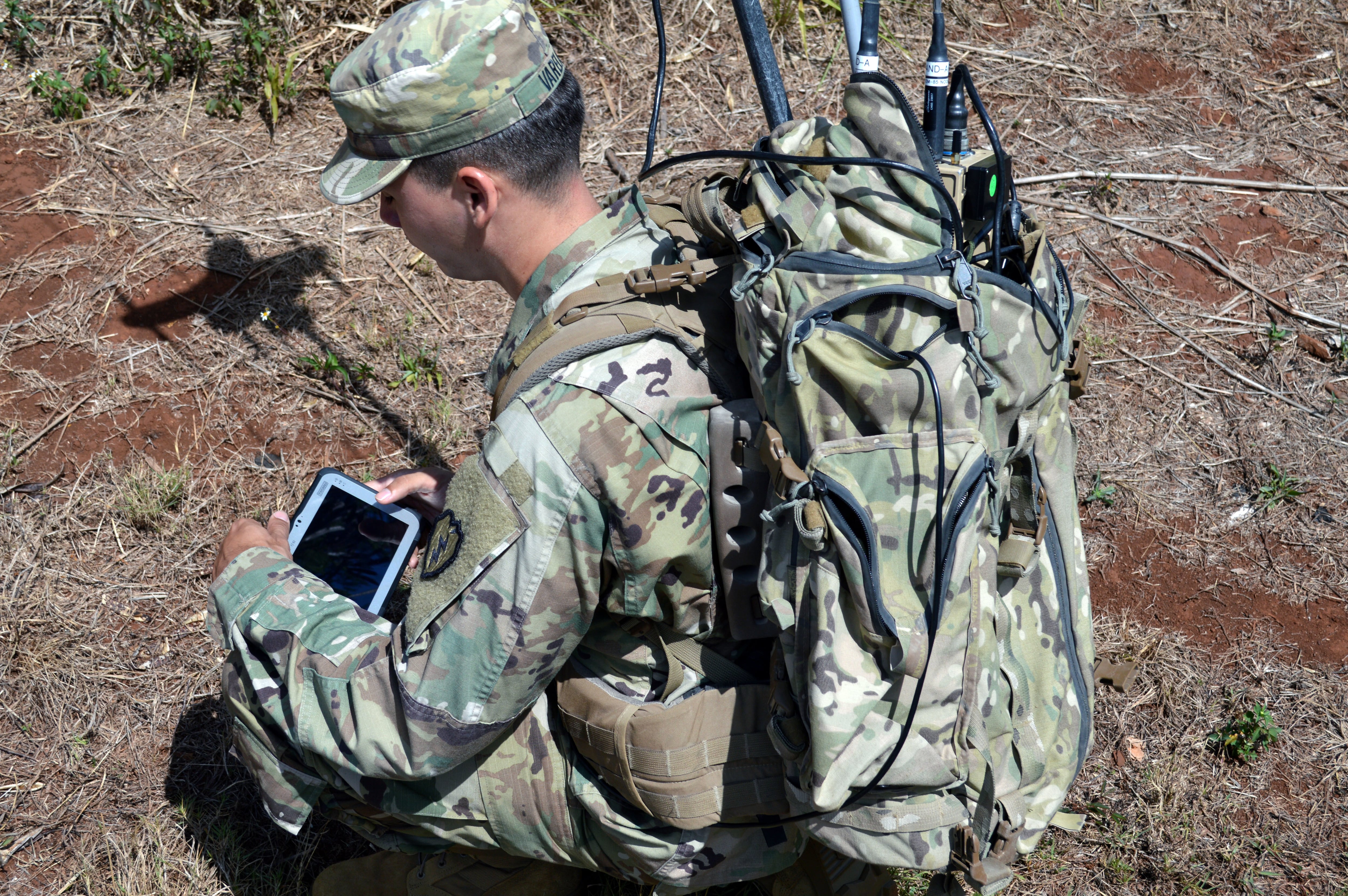WASHINGTON — Future deliveries of U.S. Army tactical network tools could include new waveform technologies that would reduce adversaries’ chances of interfering with communications.
The research and development organization tackling future capabilities for the Army’s tactical network team has several efforts underway with millimeter wave technology, a frequency channel that could allow for improved communications in the future. The Army’s Combat Capabilities Development Command’s C5ISR (Command, Control, Communication, Computers, Cyber, Intelligence, Surveillance, and Reconnaissance) Center is exploring new capabilities that could allow for more secretive communication.
The first area the service is exploring is WiGig, essentially the latest version of Wi-Fi that uses the 60GHz frequency band. According to Dan Duvak, chief of the C5ISR Center’s Radio Frequency Communications Division, the service is attracted to WiGig because the advanced technology allows narrow beams that point in a specific direction. In the future, this will help the Army’s command posts evade detection.
“They’re like laser beams being pointed from your router to each user,” Duvak said. “So what we see on the battlespace is taking that commercial technology and pairing it with existing Wi-Fi capabilities at command posts. So now we reduce the detectability because we have these very small pencil beam-type signals, going just user to user, right, instead of a big bubble of blasting energy.”
The technology is another piece of the Army’s capability set process, packages of new network tools the service’s tactical network team is delivering to soldiers every two years. The WiGig technologies are targeted for capability set ‘25 and will improve data rates, with some systems getting up to gigabits per second of data flow, greater than current capabilities, Duvak said.
The C5ISR Center is working with two companies on two other millimeter wave technologies to solve mobility and range challenges with commercial offerings, such as routers that are stationary and made for houses with a range of only several meters, he said.
Through work with a company called FIRST RF, the Army was able to reconfigure a commercial technology to extend the range from meters to kilometers. Custom software and antennas also give the radio antijam capabilities. The service is looking to use this technology for its distributed command post or manned-unmanned teaming.
The R&D outfit is also working on a custom waveform with Collins Aerospace in the 30GHz range. That project is targeting manned-unmanned teaming between air assets.
“Our target here is air applications, and a lot of it is the integration within the airframe,” Duvak said. “We traded off a little bit of the throughput. So on that one, we’re probably not at that gigabit per second, we’re more in the tens or hundreds of megabits per second. But we’re getting a lot more range by doing so.”
Andrew Eversden covers all things defense technology for C4ISRNET. He previously reported on federal IT and cybersecurity for Federal Times and Fifth Domain, and worked as a congressional reporting fellow for the Texas Tribune. He was also a Washington intern for the Durango Herald. Andrew is a graduate of American University.







